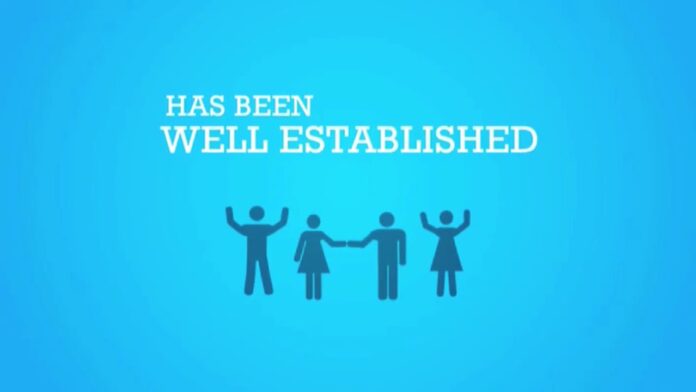The United States healthcare system has long been a topic of debate and contention. With rising costs, disparities in access, and a complex web of insurance options, it is clear that the current system is not working for everyone. In 2010, the Affordable Care Act (ACA) was signed into law with the aim of reforming the healthcare system and providing more affordable options for Americans. However, the ACA has faced both praise and criticism, and the debate over healthcare reform in the United States continues to rage on. This article will take an in-depth look at the current state of the US healthcare system, the issues and challenges it faces, proposed reforms, and the potential benefits of healthcare reform.
Current Healthcare System
The US healthcare system is often described as a patchwork of different programs and policies, making it difficult for individuals to navigate and access care. This patchwork includes both public and private options, resulting in a complex and fragmented system. According to data from the Centers for Medicare and Medicaid Services, approximately 90% of Americans have some form of health insurance coverage. However, this still leaves millions of people without coverage, leading to high levels of medical debt and barriers to accessing necessary care.
Private Insurance

Private insurance is the most common form of coverage in the United States, with around 67% of Americans receiving their health insurance through their employer. These plans are typically offered as part of employment benefits packages and are funded by both the employer and the individual. Private insurance plans vary in terms of coverage and cost, with some offering more comprehensive coverage while others have high deductibles and copayments.
Government-Funded Programs

The US government also provides healthcare coverage through various programs such as Medicare and Medicaid. Medicare is a federal program that primarily covers adults aged 65 and older, as well as those with certain disabilities or end-stage renal disease. It is funded through payroll taxes and provides coverage for hospital stays, medical procedures, and prescription drugs. However, it does not cover all healthcare costs, and many Medicare beneficiaries still have to pay out-of-pocket for additional services.
Medicaid is a joint federal and state program that provides health insurance to low-income individuals and families. Eligibility requirements vary by state, but Medicaid typically covers basic medical services such as doctor visits, hospitalization, and prescription drugs. However, the program has faced challenges in terms of funding and access, leading to disparities in coverage among different states.
Uninsured Population
Despite these various forms of coverage, there are still millions of Americans who remain uninsured. In 2018, approximately 27.5 million people were uninsured in the US. This includes both individuals who cannot afford coverage and those who do not qualify for government-funded programs but also cannot afford private insurance. The uninsured population often faces significant barriers to accessing healthcare, resulting in delayed or neglected treatment and poor health outcomes.
Issues and Challenges
The current healthcare system in the United States has several key issues and challenges that need to be addressed. These include high costs, unequal access, and disparities in quality of care.
High Costs
One of the major criticisms of the US healthcare system is its high costs. In 2019, healthcare spending in the US totaled $3.8 trillion, amounting to approximately 17.7% of the country’s gross domestic product (GDP). This is significantly higher than other developed nations, with an average of 11% of GDP spent on healthcare. The high costs can be attributed to a variety of factors, including administrative costs, pharmaceutical prices, and expensive medical procedures.
Unequal Access
Access to healthcare in the US is also unequal, with certain groups facing more significant barriers than others. Racial and ethnic minorities, low-income individuals, and those living in rural areas are more likely to be uninsured and have limited access to care. This can result in health disparities, with these groups experiencing higher rates of chronic conditions, poorer health outcomes, and shorter life expectancies.
Quality of Care Disparities
In addition to unequal access, there are also disparities in the quality of care provided in the US. A study by the Commonwealth Fund found that the US ranked last among 11 developed countries in terms of healthcare quality. Factors such as lack of primary care providers, insufficient preventive care services, and high rates of medical errors contribute to these disparities in quality of care.
Proposed Reforms
In response to these issues and challenges, several proposed reforms aim to improve the US healthcare system and make it more accessible and affordable for all Americans. These include universal healthcare, Medicare for All, and market-based solutions.
Universal Healthcare
Universal healthcare is a system where all individuals have access to medical services regardless of their ability to pay. While many developed nations have adopted this system, the US has yet to fully embrace it. Under a universal healthcare system, the government would be responsible for funding and providing healthcare coverage to all citizens. This would eliminate private insurance and create a single-payer system.
Medicare for All
Medicare for All is a proposal that aims to expand the existing Medicare program to cover all Americans. It would eliminate private insurance and provide comprehensive coverage for all necessary medical services, including dental, vision, and long-term care. This proposal has gained significant traction in recent years, with some arguing that it would reduce costs, simplify the system, and expand access to care.
Market-Based Solutions
Market-based solutions propose using competition and market forces to drive down costs and improve access to care. This includes allowing individuals to purchase insurance across state lines, expanding health savings accounts, and creating high-risk pools for those with pre-existing conditions. These proposals aim to decrease government involvement in healthcare and give consumers more control over their coverage.
Benefits of Healthcare Reform
While the debate over healthcare reform in the US continues, there are several potential benefits to implementing changes to the current system.
Increased Access and Affordability
One of the primary goals of healthcare reform is to increase access to care and make it more affordable for all Americans. By expanding coverage options and reducing costs, individuals would have better access to necessary medical services, leading to improved health outcomes.
Simplified System
The current healthcare system in the US is complex and confusing, with a variety of insurance options and different coverage policies. Healthcare reform has the potential to simplify this system, making it easier for individuals to understand and navigate. This would lead to less administrative burden and lower overall costs.
Improved Health Outcomes
With increased access to care and a simplified system, healthcare reform has the potential to improve overall health outcomes in the US. By providing preventive and necessary medical services, individuals can receive early treatment for health conditions and avoid costly emergency visits.
Implementation Plan
Implementing healthcare reform in the United States would require significant changes to the current system, including legislative action, funding, and public support. The specific plan for implementation would depend on the type of reform chosen, whether it be universal healthcare, Medicare for All, or market-based solutions.
Legislative Action
Any major changes to the US healthcare system would require legislative action. This would involve creating bills, debating and voting on them in Congress, and ultimately passing them into law. This process can be lengthy and complicated, as seen with the implementation of the ACA, which took several years from its initial proposal to its eventual enactment.
Funding
Healthcare reform would also need to be adequately funded to ensure its success. This could involve reallocating funds from existing programs, increasing taxes, or implementing new funding mechanisms. This is often a contentious issue, as different proposals may have varying levels of public support and potential impacts on the economy.
Public Support
The success of healthcare reform also relies on public support and acceptance. This would involve educating the public about the proposed changes, addressing concerns and criticisms, and garnering support from various stakeholders such as healthcare providers, insurance companies, and advocacy groups.
Conclusion
The US healthcare system is far from perfect, with high costs, unequal access, and quality disparities. While there is no one-size-fits-all solution, it is clear that changes need to be made to improve the system and provide more affordable and accessible care for all Americans. Whether this comes in the form of universal healthcare, Medicare for All, or market-based solutions, it is essential to continue the conversation and work towards a better future for the US healthcare system.









